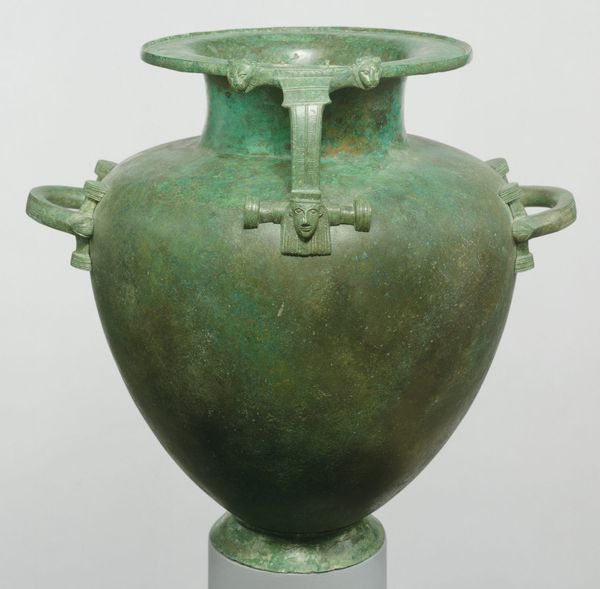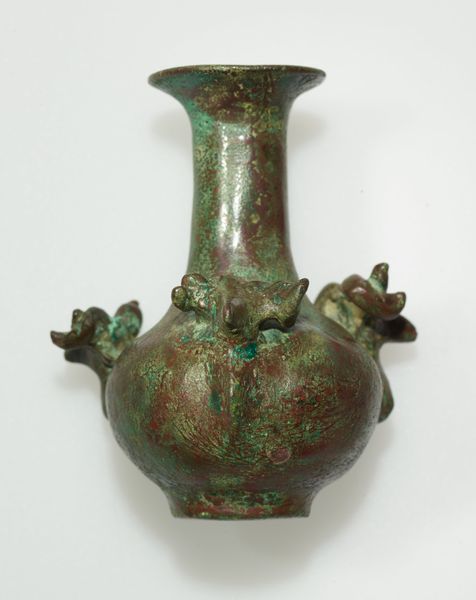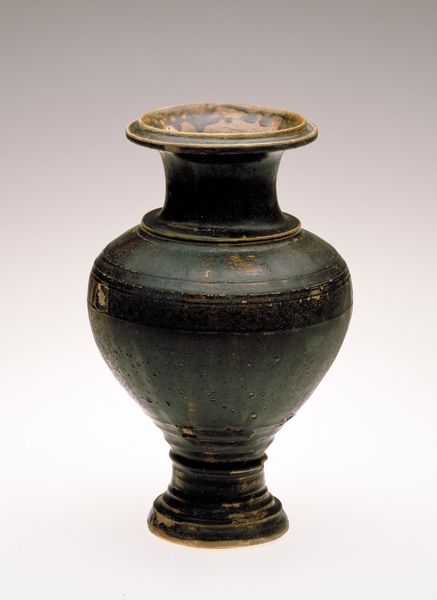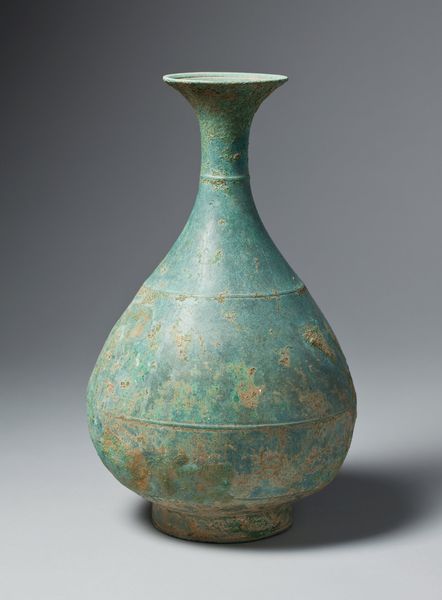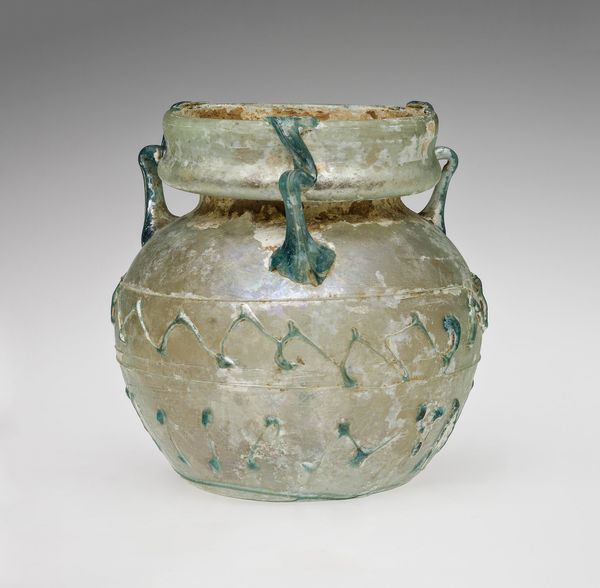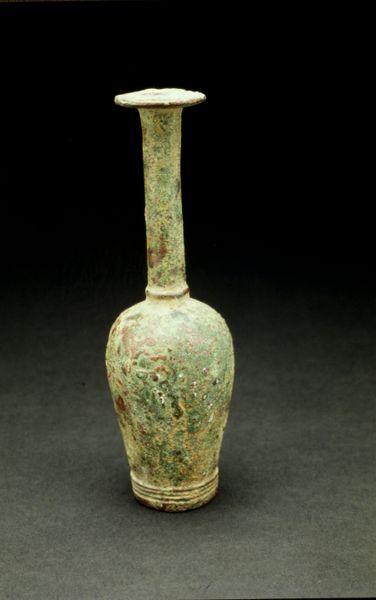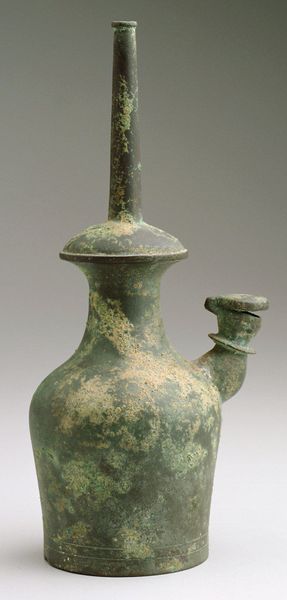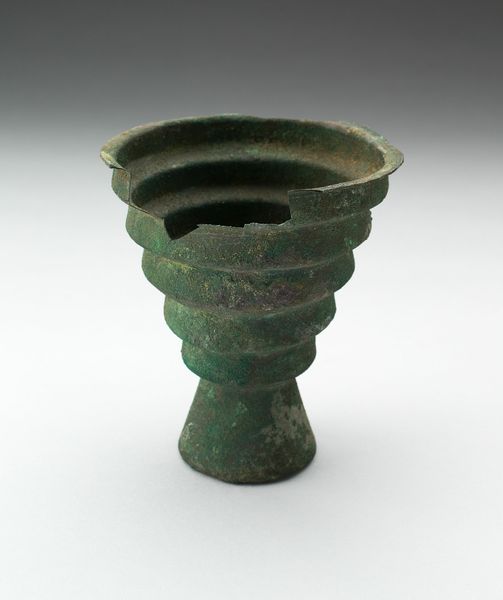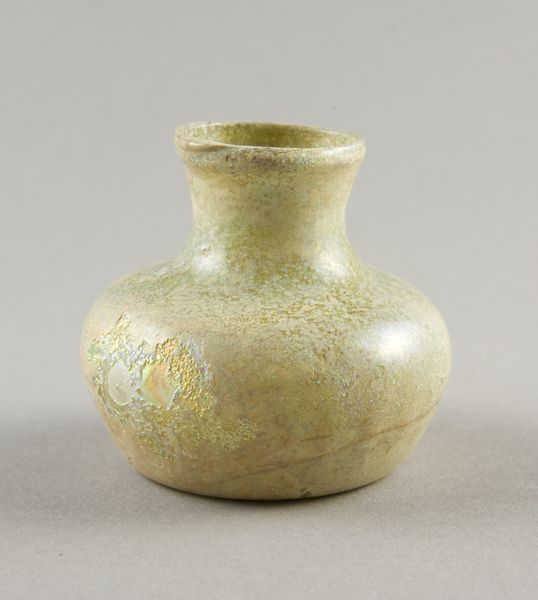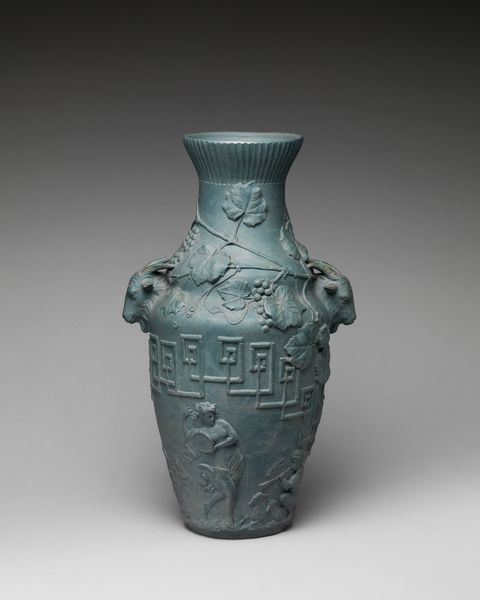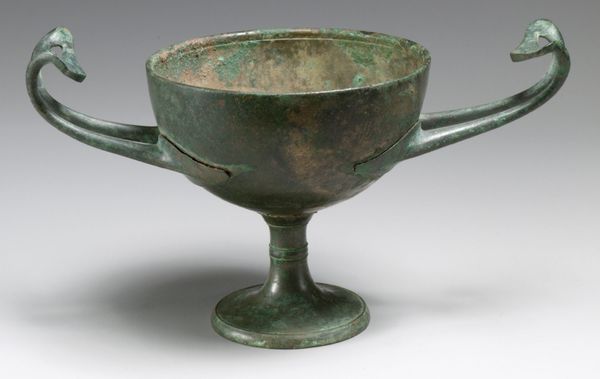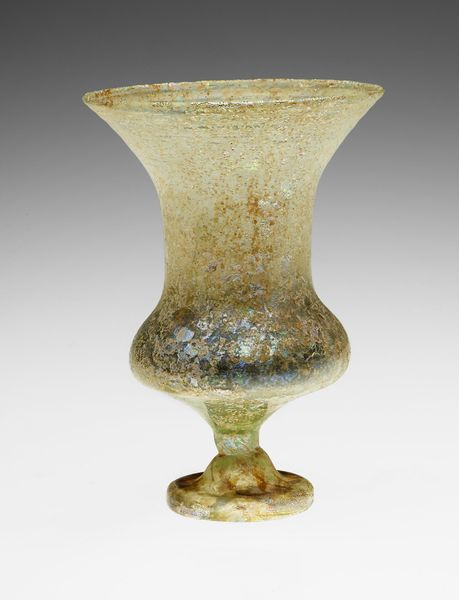
glass
#
glass
#
geometric
#
ancient-mediterranean
#
islamic-art
Dimensions: 8.4 × 6.2 × 6.2 cm (3 3/8 × 2 1/8 × 2 1/8 in.)
Copyright: Public Domain
Curator: This object, "Sprinkler or Dropper Bottle," dates back to approximately the 3rd to 4th century. It is believed to be of Ancient Levantine origin and is currently held here at The Art Institute of Chicago. Editor: It has a very fragile beauty. Seeing this piece I think of ephemerality – something both delicate and lasting through its material properties. Curator: Indeed. Consider its function beyond mere utility. Who owned it? What were their rituals surrounding scent, medicine, or perhaps even religious practices? The perfume or the potion contained would signify the access to class and wealth of ancient roman-near-east inhabitants Editor: Its fabrication must have been a complex, likely specialized, form of labor. We need to really delve into the techniques involved in manipulating glass during that era to fully appreciate the craftsman's hand. I imagine a workshop environment with highly specialized roles involved in its production. Curator: Precisely. The design integrates geometric motifs, aligning with certain trends characteristic of that period, also tying the object to the Islamic Art and trade routes circulating at the time. What stories of cultural exchange can we uncover within these patterns? Is there perhaps commentary that emerges, revealing some socio-economic aspects within the broader historical trajectory of those that utilized these objects? Editor: Beyond that, thinking about the trade in raw materials – the glass itself – that tells a complex story of resource extraction and economic exchange in the ancient world. Considering the conditions of the glass production itself can allow the viewers to have a deeper awareness of exploitation or early forms of labor conditions, if you will. Curator: Exactly! So many intersectional dimensions embedded within this artifact, far beyond it’s immediate materiality and production; it holds keys to unlock insights into power, social structures, and the intangible qualities of a society long past. Editor: Absolutely, reflecting on the tangible aspects is a very grounding moment to recontextualize its social reality! Thanks for taking us deeper, the next time I encounter ancient glassware, I'll certainly see more than just a delicate piece of history.
Comments
No comments
Be the first to comment and join the conversation on the ultimate creative platform.
